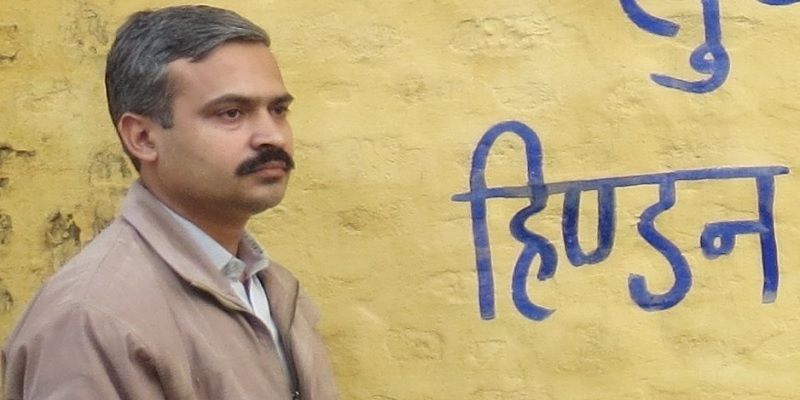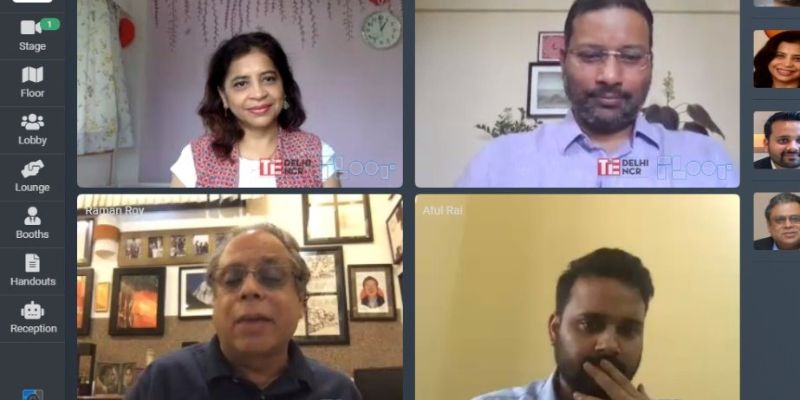How a lawyer is organising people from 400 villages to protect their river in Gandhian style
Over the past few years, Save Ganga Movement has received a lot of attention for the right reasons. Following the huge outcry by social activists, government too has started heeding to their protests. It has plans for strict action against factories polluting River Ganges, and has also started the process of surveying the aquatic animals living in the river. While this is absolutely necessary, what about cleaning the smaller rivers which feed into it? They are neither in the radar of environmentalists nor have they raised massive political agendas on water sharing.

One such river is Hindon, which originates in the Saharanpur District from Upper Shivalik in Lower Himalayan Range, and flows through Muzaffarnagar, Meerut, Baghpat, Ghaziabad, Noida, Greater Noida, joining River Yamuna just outside Delhi. The industries of western Uttar Pradesh discharge their effluents, often with no treatment, directly into the river. This has not only contaminated the river badly, but has also destroyed the biodiversity along the river. Dissolved oxygen levels are zero throughout the length of the river.
Given the river runs its course mostly along small towns and villages, the onus of rejuvenating the river lies on the people living in the area. This is the story of Vikrant Sharma, one such common man who has stood up and organised villages and small towns to fight the cause of protecting their river.
A resident of Ghaziabad and a lawyer by profession, Vikrant is a nature lover and works closely with the Magsaysay Award winner and social worker Rajendra Singh, also known as the Water Man of India. Vikrant spends most of his time on river banks and in forests, and his work with villagers and small-town folks has received great praise. He believes in raising awareness at the ground level and organising against those trying to destroy the river’s ecosystem. Vikrant says,“Rivers are not just sources of water. Each river has a story to tell; a story of thousands of years of culture and civilisation which have thrived along its banks. If we lose these rivers, we lose these stories too.”

Actively working in western UP, one of the most fertile lands of India, Vikrant’s approach is old-school. Treading the path of Gandhian non-violence, he travels by foot to villages and small towns to raise awareness and organise common folks.Vikrant’s father was a CRPF officer who made sure that Vikrant was exposed to the cause of social justice right from an early age. After finishing his graduation in History (Hons.) from Delhi University, he went on to do his LLB and started practicing in Ghaziabad Court in the year 2002. Vikrant recalls,“I always found solace in nature’s company. Around the year 2004, when I first realised that River Hindon had started to lose its colour and form and transformed into a dirty drain, I wanted to fix it but didn’t knowhow. After trying alone for a while, I asked other young people and activists to join the cause. This is how Hindon Jal Biradari came into existence.”
Vikrant knew early on that in order to fight a worthwhile battle to make the river pollution free, they will have to connect the villagers living along the bank of the river. He says,“We started to organise long walks along the river to understand the problem at a deeper grassroot level. I met people living along the river banks, developed a better understanding of the biodiversity along the river and the problem they were all facing. It also helped me get connected with the roots of the problem we are trying to solve.”

Vikrant and his friends have, till date, organised numerous walks along the bank of the river, meeting villagers in over 400 villages. The 201km-long walk starts from a small village in Saharanpur district where the river originates and ends at a village in Noida, where the river meets Yamuna. Vikrant says,“It is due to these activities that we have been able to create a map of the river along with its tributaries Kali and Krishni, and about 100 other small brooks which flow into the river. Through photography and wall art, we have been spreading awareness among the residents of these 400 villages. We also visit schools and organise drawing and essay-writing competitions among children on topics concerning their river.”
They have also organised over 15 meetups and seminars among residents of these villages to help create awareness on the need to stop pollution and rejuvenate the river they closely depend on.
Recently in an essay writing competition, they received over 400 entries of which 60 were submitted by prisoners confined in the area.

Vikrant and his friends have also created a documentary and distributed copies among the residents of over 100 villages living in the river’s basin. Vikrant says,“In one of our organised walks along the river a few years ago, we discovered remains from the Harappa era in a village called Suthari. We started a campaign for preservation of these relics. The village eventually received attention from historians and archaeologists. Later, more remains from our ancient history were excavated here.”In their campaign to bring the river back to life, they have filed over 100 RTIs. The responses received have helped them collect important data which has helped take their campaign further and plan better on what needs to be done in the days to come. They have also filed two cases in the National Green Tribunal (NGT) against encroachment and pollution of the river. The responses received from NGT were in their favour.
You can stay connected to Vikrant and his Hindon Jal Biradari by visiting their Facebook page.
Related Stories :
Thermal power plant near Sunderbans fails clearance
Indo-Tibetan border police joins the mission to clean Ganga
Fighting the odds to save a river: Journey of “Return of the Ganga”








